Citing U.S. intelligence sources, media reported that China conducted two hypersonic missile tests capable of carrying a nuclear warhead in the summer, launching the so-called “partial-orbital bombing” system. The experts noted that China had demonstrated successes that caught U.S. intelligence by surprise. The experts said the rocket in mid flight would have crossed the Arctic, bypassing the U.S. anti missile defense systems and the hypersonic glide vehicle can travel towards the target in any direction making it difficult to intercept.
Hypersonic missiles had already gotten the attention of the U.S. planners after the successful development of hypersonic projectiles by Russia.
The Russian gliding hypersonic unit “Avangard” manoeuvres in flight and develops a speed of up to Mach 28. The fireball is covered with plasma in flight, which absorbs radar waves. It can be detected with an infrared thermal imager but cannot be detected with radar. But the thermal imager has a very small range. For this reason, it is very, very difficult to detect the Avangard unit in a timely manner.
On November 18, the Russian Defence Minister Sergei Shoigu reported to President Vladimir Putin on the successful firing of a Zircon rocket in the White Sea from the frigate Admiral Gorshkov. The launch of the Zircon sea-based hypersonic missile was carried out as part of the final cycle of its tests, the Russian Defense Ministry said.
Dagger is another hypersonic missile from Russia and is fired from a modernized long-range fighter-interceptor MiG-31K. According to the Russian military, it can hit targets at a distance of more than 2,000 km and is guaranteed to overcome all existing and developed air and missile defense systems.
Lack of defence against Hypersonic missiles
In mid-October, U.S. Permanent Representative to the Geneva Conference on Disarmament, Robert Wood, said that the U.S. has no means of protection against hypersonic weapons.
“For us, hypersonic technology is a matter of concern. We do not know how to defend ourselves against this technology, as, incidentally, neither China nor Russia know, “the Washington Examiner quoted him saying.
At the same time, Wood said that the U.S. lagging in this area as it is unwilling to start a new arms race.
“We were careful not to seek military applications for this technology,” Wood said.
As per the Russians, to counter hypersonic weapons, the American military-industrial complex will have to solve the difficult task of creating tracking systems for targets flying at ultra-high speeds.
Not just the U.S., the world will need to create interceptors to intercept missiles travelling at a speed of more than 6-7 Mach.
According to American experts, to intercept a hypersonic missile travelling at a speed of Mach five, you need to accelerate the interceptor to at least Mach eight or send an interceptor for head on collision. Both are unrealizable in practice considering today’s technology. First, there are no such high-speed interceptors. Secondly, unlike a ballistic missile, a hypersonic cruise missile moves along an unpredictable trajectory. To hit it head on, you need to know precisely when the missile will be at a certain point in time.
The U.S. attempts
The U.S. Missile Defense Agency has hired Raytheon, Northrop Grumman and Lockheed Martin to develop a defense system capable of intercepting hypersonic missiles. Companies must develop a floating booster interceptor that will track and target hypersonic missiles on their way to a target. The need to integrate such an interceptor with the American missile defense system Aegis is indicated as one of the conditions. According to the agency, about $ 60 million was allocated for three contracts.
At the same time, the U.S. military is trying to use Raytheon’s sea-based SM-6 missile as an interceptor for hypersonic targets based on existing cruise missiles. The missile is scheduled to be tested against hypersonic targets in 2024.
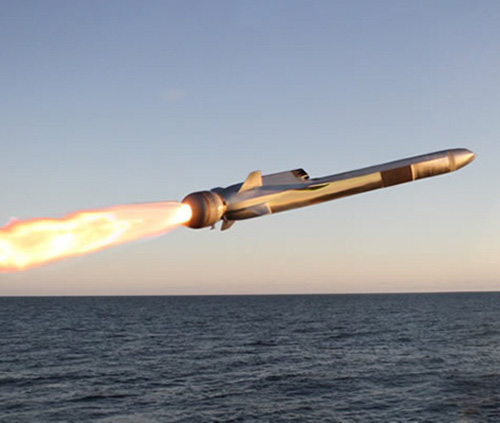
In September 2018, the Pentagon’s Defense Advanced Research Projects Agency (DARPA) showed the public the first sketch of the Glide Breaker hypersonic missile interceptor. However, so far, no details have been reported about it. The visitors to the jubilee exhibition dedicated to the 60th anniversary of DARPA were able to familiarize themselves with only one drawing, which was very conventionally depicted as the future “rocket killer”. DARPA clarified that the weapon will not carry explosives but will shoot down missiles using kinetic energy.
Another promising area of hypersonic defence is directed energy systems which includes microwave and laser. The U.S. Air Force Research Laboratory received a mock-up of the airborne combat laser hull at the end of February this year. The power plant and beam steering system were scheduled for testing by mid-summer. And in 2024, they expect to begin full-fledged ground tests of the entire system.
It is a part of The SHIELD (Self-Protect High-Energy Laser Demonstrator) program launched in 2016. SHIELD is positioned primarily as a means of defense. The laser must shoot down surface-to-air or air-to-air missiles approaching the aircraft. The Americans want to arm them with large planes like AC-130 and fighters aircraft. Over time, laser cannons will also be adapted for strikes against ground infrastructure.
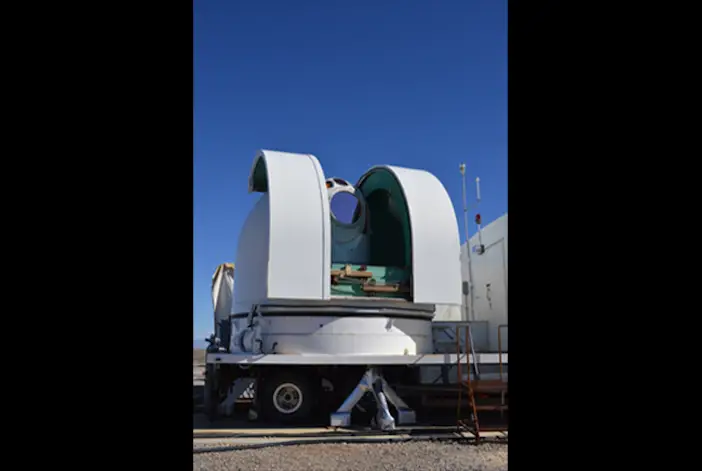
The U.S. plans to outfit a UAV with a laser beam interceptor to be flown at 650000 ft. The system is expected to be ready by 2023. This program is for anti long range hypersonic missiles and plans to stop the missiles at the boost stage, where it is the slowest and least manoeuvrable. But this stage lasts for about 5 minutes, and the window of opportunity is small.
The U.S. military laser program has been in the making for several decades. In 1999, an experimental Boeing 747 YAL-1A ABL prototype, was built with a laser installation onboard: a rotating turret with many optical devices and a combat laser mirror was installed instead of a nose cone. However, even despite the impressive size of the aircraft, the megawatt power plant fit inside the fuselage with great difficulty.
After a series of ground tests and conventional firing, the combat laser was tested in practice. In 2010, a beam from an experimental Boeing destroyed a ballistic missile – upon impact, it warmed up to critical temperatures and collapsed in the air. Then the plane shot down another round of ammunition. And yet the program was closed due to the high cost and complexity. Also, the Pentagon doubted that the laser could be used in actual combat.
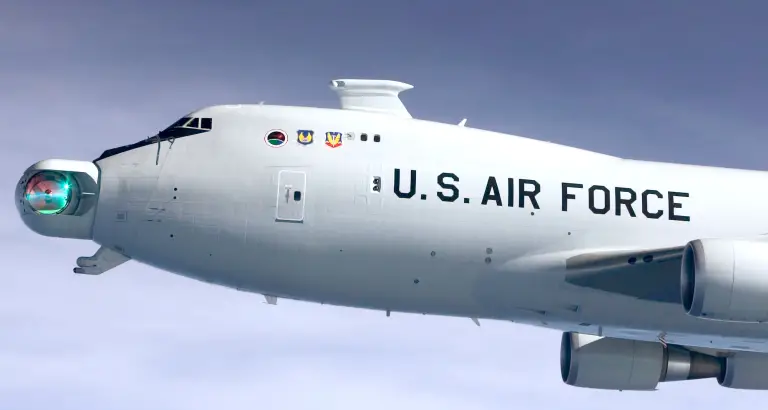
Laser weapons were also placed on ships. In 2017, the Americans tested such an installation in the Persian Gulf on the USS Ponce transport ship: they shot down a rather large drone. Testers and the military noted that the laser is much more accurate than conventional weapons, and the beam is 50 thousand times faster than intercontinental ballistic missiles.
Raytheon posted an animation on Twitter showing the operation of a laser system capable of intercepting missiles. Currently, the system can handle UAV’s, and in future, it can destroy hypersonic missiles, says the company’s website.
The first interceptor capable of destroying hypersonic targets may be a promising anti-missile missile, created in the United States under the Next-Generation Interceptor (NGI) program.
Detection is another area the U.S. is working as a part of the hypersonic missile defense. At the beginning of 2018, the head of the Strategic Command of the U.S. Armed Forces, General John Hayten, proposed directing efforts to create anti-missile systems placed in orbit. He said that space based sensors deployed could track the launch of missiles and quickly transmit this information to land and sea systems. Hypersonic Ballistic Tracking Space Sensors (HBTSS) development began in January 2021. These orbiters will pick up the hypersonic missile launch immediately and pass on the information to the anti missile defences. Their task is to provide information on the missile launch and launching the interceptor into the target area. The HBTSS prototype is promised to be shown in 2023.
In December, the U.S. Department of Defense said that it plans to test a new long-range radar capable of tracking hypersonic weapons. The new U.S. radar will be located at the Clear Air Force Station. After full commissioning, the facility “will provide an unprecedented ability to simultaneously search and track several small targets, including all classes of ballistic missiles, at very long ranges,” said the statement.
The Russian attempts to shoot hypersonic weapons
Russia is developing hypersonic weapons and creating means of protection against them. As per Russian media in 2020, Russians are now designing an ultra-long-range air-launched missile capable of intercepting high-speed and manoeuvring targets. The multifunctional long-range intercept missile system (MFRK DP) is planned to be fired from the MiG-31 fighters and or the secretive MiG-41 and can hit hypersonic ammunition. The missile may be mated with several K-77M air to air missile warheads to increase the probability of hitting the hypersonic target. The warheads have a pre-calculated point of interception on the trajectory of the hypersonic missile and attack it head-on. The use of an ultra-long-range missile will expand the interceptor’s engagement zone.
The Russian Air Defense and Missile Defense Forces have already started exercises against hypersonic weapons. These drills concentrate on the main feature of hypersonic weapons – manoeuvring.
The Russians are also testing the electronic warfare (E.W.) system, interfering with the enemy’s hypersonic weapons.
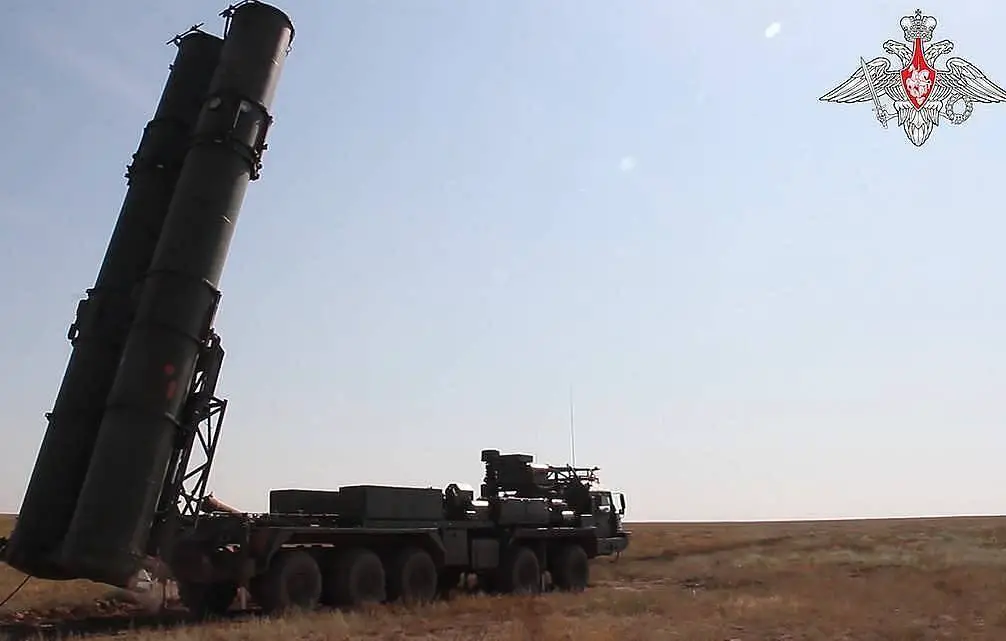
In December 2020, Russian President Vladimir Putin told reporters that the S-500 surface-to-air missile defense system could provide an antidote to enemy hypersonic weapons. According to available information, the S-500 complex can detect and simultaneously hit up to 10 ballistic missile warheads flying at a speed of over 6.4 kilometres per second. This missile defense system can use several radars to detect aircraft, helicopters, unmanned aerial vehicles, and missiles simultaneously.
Attention has been paid to laser weapons in Russia too. In the late 1970s, USSR installed a laser system on the Il-76. During the tests, the A-60 system destroyed several dozen air targets. The system also carried out experiments to blind and destroy orbiting satellites. The project was suspended at the end of the 2000s, but work was resumed in 2014.
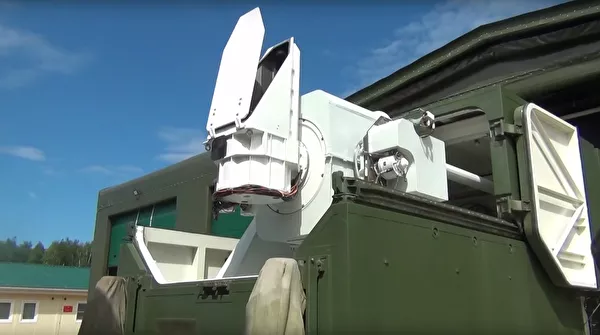
In 2016, the Deputy Minister of Defense of Russia Yuri Borisov announced the deep modernization and successful ground and flight experiments of the air laboratory, and in 2018 the Peresvet ground-based special-purpose laser complex took over on experimental combat duty. According to experts, this installation, designed to blind enemy equipment, disable cruise missiles, drones and other air attack weapons, complements the air defense and electronic warfare systems in service, with which it will operate in a single bundle. But in the actual world, combat laser complex Peresvet can destroy only drones in ideal conditions.
.
